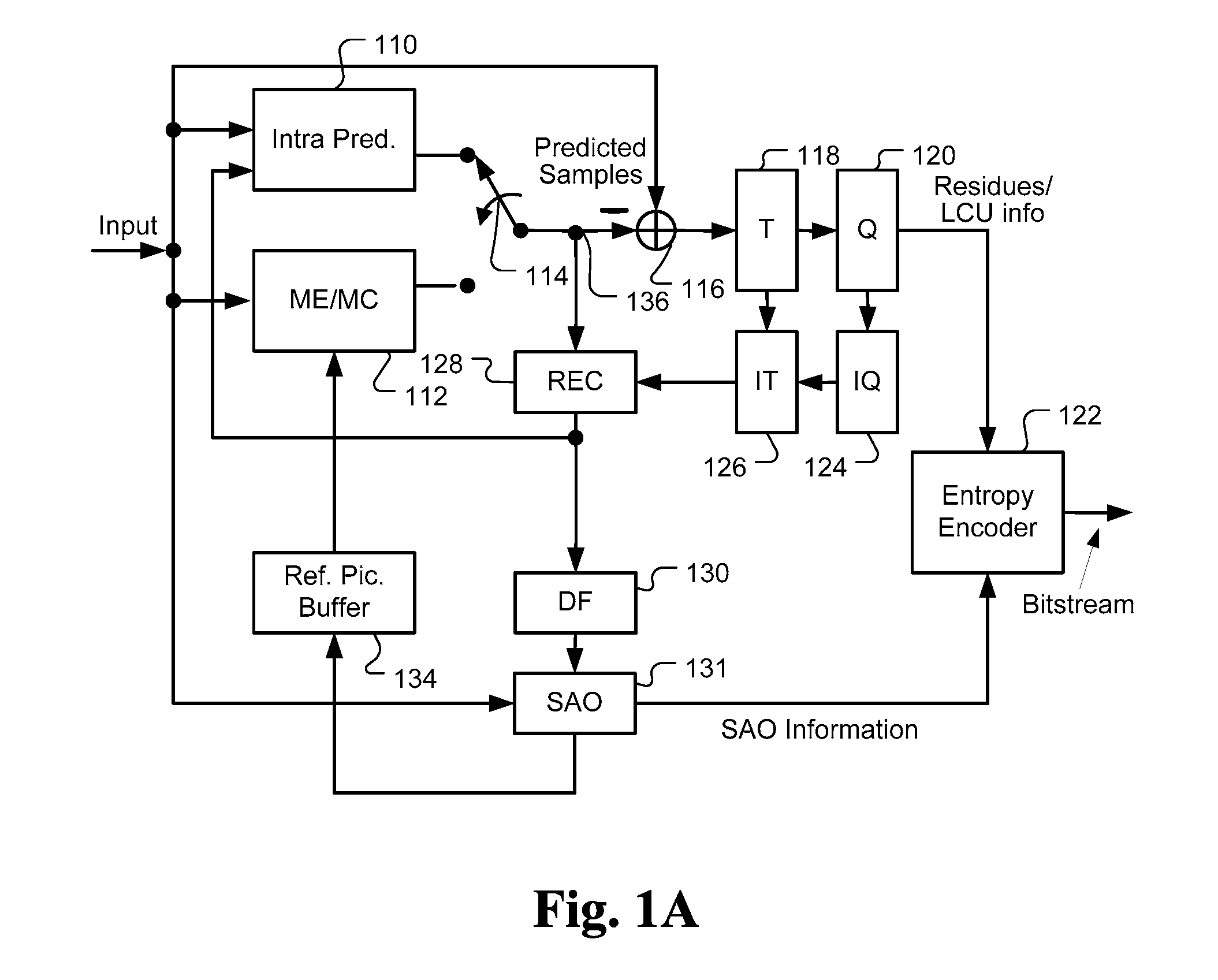Method and Apparatus for Motion Boundary Processing
a motion boundary and processing technology, applied in the field of video coding, can solve problems such as blockiness introduction of coding artifacts, and various impairments of reconstructed video data from rec b>128/b>,
- Summary
- Abstract
- Description
- Claims
- Application Information
AI Technical Summary
Benefits of technology
Problems solved by technology
Method used
Image
Examples
Embodiment Construction
[0025]In HEVC, each coding unit (CU) may be partitioned into one or more prediction units. The OBMC is only applied to PU boundaries as described in the previous section. However, motion discontinuity may also exist at the CU boundaries as well. Accordingly, the present invention discloses a boundary pixel processing technique named motion boundary enhancement (MBE) to improve the motion compensated prediction at the CU boundaries. FIG. 4 illustrates an example according to an embodiment of the present invention. In FIG. 4A, the current CU boundaries are indicated by thicklines (410). The pixels at the CU boundaries will use the motion vector(s) from the upper side (MV_U_1), the left side (MV_L_1) or both the upper side and the left side in addition to its own motion vector (MV_X) to form a weighted sum of motion prediction when performing motion compensation. Note that MV_U_1 is the first available motion vector derived from the upper CUs and MV_L_1 is the first available motion ve...
PUM
 Login to View More
Login to View More Abstract
Description
Claims
Application Information
 Login to View More
Login to View More - R&D
- Intellectual Property
- Life Sciences
- Materials
- Tech Scout
- Unparalleled Data Quality
- Higher Quality Content
- 60% Fewer Hallucinations
Browse by: Latest US Patents, China's latest patents, Technical Efficacy Thesaurus, Application Domain, Technology Topic, Popular Technical Reports.
© 2025 PatSnap. All rights reserved.Legal|Privacy policy|Modern Slavery Act Transparency Statement|Sitemap|About US| Contact US: help@patsnap.com



